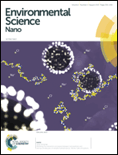
Environmental Science-Nano
Scope & Guideline
Unveiling the Impact of Nanoscale Materials on Our Planet
Introduction
Aims and Scopes
- Nanomaterials for Environmental Remediation:
The journal emphasizes research on the use of nanomaterials to enhance the degradation of pollutants in various environments, including water, soil, and air. This includes studies on photocatalytic degradation, adsorption mechanisms, and the development of novel nanocomposites. - Impact of Nanoparticles on Ecosystems:
Research addressing the ecological effects of nanoparticles, including their toxicity to aquatic and terrestrial organisms, bioaccumulation, and translocation in food webs. This area investigates both the beneficial and detrimental impacts of nanomaterials on ecosystems. - Innovative Nanotechnology Applications in Agriculture:
The journal showcases studies on the application of nanotechnology to improve agricultural practices, including the development of nano-fertilizers, nano-pesticides, and the enhancement of crop resilience to biotic and abiotic stresses. - Nanotoxicology and Environmental Health:
Research focusing on the safety and environmental health implications of nanomaterials, including their fate in the environment, interactions with biological systems, and potential risks to human health. - Sustainable Development through Nanotechnology:
Exploration of how nanotechnology can contribute to sustainability, including waste management, resource recovery, and the development of sustainable materials and processes.
Trending and Emerging
- Green Synthesis and Eco-Friendly Nanomaterials:
There is a significant trend towards the development of environmentally friendly synthesis methods for nanomaterials, focusing on biogenic approaches and sustainable processes that minimize environmental impact. - Advanced Nanocomposites for Pollution Mitigation:
Research on multifunctional nanocomposites designed for enhanced pollutant removal and degradation is on the rise. These studies often combine different nanomaterials to create synergistic effects that improve efficiency in environmental applications. - Smart Nanotechnology in Agriculture:
Emerging studies are increasingly focusing on the use of smart nanotechnology applications in agriculture, such as the development of responsive nano-fertilizers and nano-pesticides that optimize delivery and reduce environmental impact. - Nanomaterials in Climate Change Mitigation:
Research exploring the role of nanotechnology in addressing climate change, particularly through carbon capture and storage solutions, is gaining traction. This includes studies on nanomaterials that enhance the efficiency of CO2 sequestration. - Nanobiotechnology for Sustainable Food Systems:
The integration of nanotechnology with biotechnological approaches in food production and safety is emerging as a vital area of research, focusing on enhancing crop resilience, safety, and nutritional quality.
Declining or Waning
- Traditional Nanomaterial Synthesis Techniques:
There is a noticeable decrease in publications focused on conventional methods of synthesizing nanomaterials, such as chemical vapor deposition and sol-gel processes. Researchers may be moving towards greener, more sustainable synthesis methods. - Generalized Toxicity Assessments:
Research that broadly assesses the toxicity of various nanoparticles without specificity to environmental conditions or biological interactions seems to be less frequent. There is a shift towards more nuanced studies that consider the context-dependent nature of nanotoxicity. - Static Nanomaterial Characterization:
The emphasis on purely physical and chemical characterization of nanomaterials, such as size and surface area measurements, is declining. There is a trend towards dynamic studies that incorporate environmental interactions and biological effects. - Nanoplastics Research:
Although still an important topic, the volume of research specifically addressing the effects of nanoplastics appears to be stabilizing, suggesting that the initial surge of interest may be leveling off as foundational knowledge is established.
Similar Journals

Transactions of the ASABE
Unveiling cutting-edge discoveries in agricultural sciences.Transactions of the ASABE is a premier journal published by the American Society of Agricultural and Biological Engineers, specializing in innovative research and practical applications in the fields of agricultural and biological engineering. With an ISSN of 2151-0032 and E-ISSN 2151-0040, this journal has established a vital niche in disseminating high-quality scholarly content that addresses the complex challenges faced in agriculture and biological systems. The journal operates under an open access model, facilitating broad dissemination of research findings to a global audience. This commitment to accessibility is reflected in its coverage of diverse topics, including agriculture, soil science, food science, and environmental engineering. Although the journal's coverage in Scopus was discontinued in 2021, it once ranked among the top in its categories, indicating its significant contribution to advancing knowledge in these essential fields. Researchers, practitioners, and students are encouraged to engage with the Transactions of the ASABE to stay abreast of developments and foster collaboration in promoting sustainable engineering solutions.
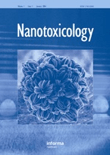
Nanotoxicology
Innovating Solutions for a Safer Nanotechnology FutureNanotoxicology is a pioneering journal published by Taylor & Francis Ltd, dedicated to the critical examination of the toxicity of nanomaterials and their implications in biomedical engineering, nanoscience, and toxicology. With an ISSN of 1743-5390 and E-ISSN of 1743-5404, this journal has established itself as a significant player in its field since its inception in 2007. Classified within the Q2 category for 2023 in major categories such as Biomedical Engineering, Nanoscience and Nanotechnology, and Toxicology, it reflects its robust impact across interdisciplinary research. Notably, its Scopus rankings position it in the top percentile, underscoring its influence in pharmacology and toxicology. The journal offers scholars, researchers, and professionals a platform for sharing pioneering studies and reviews, thereby advancing the understanding of nanomaterial interactions with biological systems. Published from the United Kingdom, Nanotoxicology recognizes the growing importance of nanotechnology in health and environmental contexts, making it an essential resource for anyone engaged in this rapidly evolving field.

Reviews of Environmental Contamination and Toxicology
Leading the way in toxicology and environmental science.Reviews of Environmental Contamination and Toxicology is a leading journal published by SPRINGER, dedicated to advancing the understanding of environmental science, toxicology, and public health. Since its inception in 1987, this esteemed journal has established itself as an invaluable resource for researchers and practitioners alike, showcasing a wealth of peer-reviewed articles that delve into the complexities of environmental contaminants and their effects on human health and ecosystems. With an impressive impact factor and consistently ranking in the Q1 category across multiple fields including Health, Toxicology and Mutagenesis, as well as Public Health, this journal commands attention, boasting Scopus rankings that place it among the top-tier publications globally. Researchers will find that the journal provides not only in-depth reviews but also practical implications for policy and practice regarding environmental issues. Located in the heart of New York, Reviews of Environmental Contamination and Toxicology is poised to remain at the forefront of this critical field through 2024 and beyond, making it an essential addition to the library of any environmental health scholar or practitioner.

Environments is a distinguished international journal published by MDPI, focusing on the interdisciplinary realm of ecology, environmental sciences, and sustainability. Established in 2014, this Open Access journal allows unrestricted access to its high-quality research articles, making it an essential resource for researchers, professionals, and students alike. With its impact factor and Scopus ranks reflecting its academic significance—including a Q1 ranking in Ecology, Evolution, Behavior and Systematics—Environments serves as a critical platform for the dissemination of innovative research and practical applications in addressing pressing environmental challenges. The journal's commitment to promoting sustainability and renewable energy initiatives aligns with global efforts to foster a better understanding of our ecological systems and enhances its relevance in today’s rapidly evolving environmental landscape. The journal is based in Switzerland and encompasses a broad scope dedicated to advancing scholarly dialogue in environments related to ecological and environmental science.
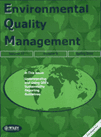
ENVIRONMENTAL QUALITY MANAGEMENT
Fostering Knowledge for a Sustainable FutureENVIRONMENTAL QUALITY MANAGEMENT is a respected journal published by WILEY, focusing on interdisciplinary studies that merge environmental science with public health, management, policy, and law. Since its inception in 1991, this journal has provided a platform for researchers and practitioners to share innovative insights and advancements in understanding environmental quality and its impacts on human health and the ecosystem. With an ISSN of 1088-1913 and an E-ISSN of 1520-6483, it holds a significant position in the academic community, evidenced by its presence in the Q3 quartile across several categories, including Management, Monitoring, Policy and Law, as well as Pollution and Waste Management. Although it is not an open-access journal, it continues to be a vital resource for those in the environmental sector, offering robust evaluations and discussions that advance knowledge and foster improved practices. With Scopus rankings demonstrating its relevance among other titles in the field, ENVIRONMENTAL QUALITY MANAGEMENT plays a crucial role in shaping discourse and informing policy in an increasingly vital area of study.
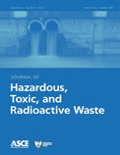
Journal of Hazardous Toxic and Radioactive Waste
Innovating research in waste management and remediation.The Journal of Hazardous Toxic and Radioactive Waste, published by the ASCE-American Society of Civil Engineers, serves as a pivotal platform for the dissemination of innovative research in the fields of civil and environmental engineering, focusing on the management and remediation of hazardous materials. With an ISSN of 2153-5493 and an E-ISSN of 2153-5515, this journal has established its reputable presence since its inception, converging years from 2011 to 2025. It operates within esteemed Category Quartiles, ranking Q2 in Chemical Engineering, Environmental Engineering, and several related fields, making it a valuable resource for researchers and practitioners alike. Though not open access, its rigorous peer-review process ensures high-quality and impactful findings, underscoring its significance in advancing knowledge on waste management, environmental chemistry, and public health concerns. As a critical resource for professionals dedicated to addressing the growing challenges associated with hazardous and radioactive waste, this journal invites contributions that push the boundaries of scientific inquiry and practical application.

University Politehnica of Bucharest Scientific Bulletin Series B-Chemistry and Materials Science
Connecting Ideas, Transforming Materials ScienceUniversity Politehnica of Bucharest Scientific Bulletin Series B-Chemistry and Materials Science is a renowned academic journal published by POLYTECHNIC UNIV BUCHAREST, situated in Romania. With the ISSN 1454-2331, this journal serves as a dynamic platform for the dissemination of innovative research findings in the fields of chemistry and materials science. Although classified in the Q4 quartile of both Chemistry (miscellaneous) and Materials Science (miscellaneous) categories for 2023, it has made a significant impact by providing a venue for emerging scholars and established researchers alike to share their work. The journal seeks to bridge theoretical insights and practical applications, promoting interdisciplinary dialogue and advancing scientific understanding. The scope encompasses a broad range of topics, reflecting contemporary advancements and challenges within the field. To facilitate access to its articles, while it does not currently operate under an open-access model, the journal remains committed to enhancing visibility through digital libraries. With a publication history spanning from 1999 to 2024, the journal is vital for all stakeholders—researchers, professionals, and students—seeking to stay abreast of developments in chemistry and materials science.

ACS Applied Nano Materials
Pioneering the Future of Applied Nanotechnology.ACS Applied Nano Materials, published by the American Chemical Society, is a premier journal that serves as a vital resource in the rapidly evolving field of nanomaterials. With a commendable impact factor placing it in the Q1 category of Materials Science in 2023, this journal has established itself as a leading platform for disseminating high-quality research that showcases innovative applications and advancements in nanomaterial science. Since its inception in 2018, it has consistently aimed to bridge the gap between fundamental research and practical application, making it a crucial reference for researchers, professionals, and students interested in cutting-edge nanotechnology. Access options for the journal encourage collaboration and knowledge sharing within the scientific community, reflecting the journal's commitment to fostering advancements in the field. With its base in Washington, D.C., ACS Applied Nano Materials is positioned at the forefront of scientific dialogue, exploring the implications of nanomaterials in various domains, ultimately contributing to technological innovations that impact everyday life.
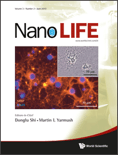
Nano LIFE
Elevating the discourse on nanoscale innovations in life sciences.Nano LIFE, published by World Scientific Publishing Company, is a multidisciplinary journal that delves into the dynamic fields of bioengineering, biomedical engineering, and pharmaceutical science, providing a platform for researchers to disseminate their cutting-edge findings. With an ISSN of 1793-9844 and e-ISSN 1793-9852, this journal emphasizes the significance of nanoscale research in healthcare and technology, positioning itself as a vital resource for professionals and academics alike. Although currently categorized in the Q4 quartile for multiple scientific disciplines in 2023, its unique focus on the intersection of nanotechnology and life sciences aims to elevate the discourse in these rapidly evolving sectors. Researchers can anticipate publishing innovative methodologies and results, contributing to the overall understanding and application of nanotechnology in medicine. Located in Singapore, Nano LIFE not only serves the global research community but also reflects the growing interest in nanotechnology across diverse fields.
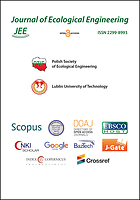
Journal of Ecological Engineering
Advancing Sustainable Solutions for a Greener TomorrowJournal of Ecological Engineering, published by the Polish Society of Ecological Engineering (PTIE), stands as a significant platform for research and advancements in the field of ecological engineering. With its ISSN number 2299-8993, this open-access journal has been disseminating knowledge since 2013, providing unrestricted access to vital findings in agronomy, ecology, and environmental engineering. The journal is recognized for its credible contribution to the scientific community, holding a Q2 ranking in both Agronomy and Crop Science and Ecology for 2023, as well as respectable Q3 rankings in related categories. Situated in Poland, at Lublin University of Technology, the journal actively supports the exchange of innovative ideas and practices among researchers, professionals, and students. Its commitment to open-access publishing not only enhances visibility but also fosters collaborative efforts in tackling contemporary ecological challenges. By focusing on applied and theoretical aspects of ecological engineering, the journal is dedicated to advancing sustainable practices and policies that benefit both the environment and society.